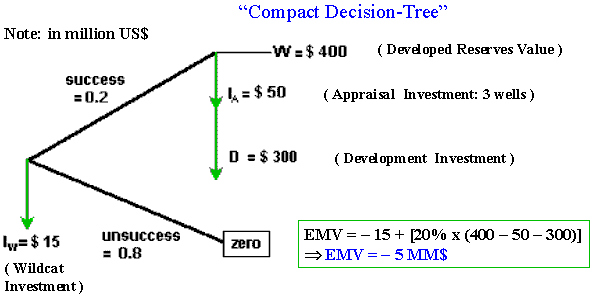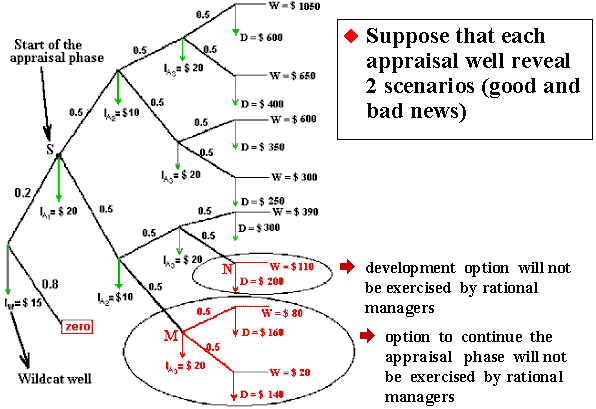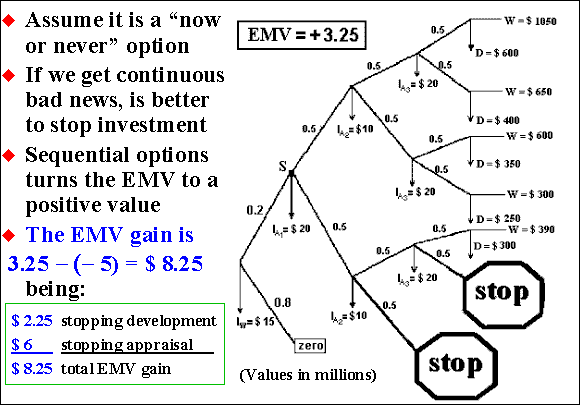
Answer: yes, mainly sequential options with investment revealing new informations
Let us see an example: exploratory oil prospect, from Dias (1997). The example here is from oil exploration, but the reasoning is very general for sequential options. For example, R&D, new market entry, new product introduction, etc.
The decision is "to drill or not to drill" the wildcat (pioneer well).
If the wildcat drilling reveals an oilfield, can be necessary to
delineate the oilfield reducing the technical uncertainty about the size
and quality of the oilfield reserves. This is the function of the
appraisal phase, by drilling additional exploratory wells and/or
performing additional seismic survey.
After the appraisal phase, the oil company can develop or not the
oilfield. All phases require investment, the largest investment is in the
development phase. But for while, is not sure that there is any barrel of
oil there, needs to drill the wildcat to know.
Shall the firm to drill the wildcat? The decision to drill the wildcat needs to look forward the possible future benefits at the development phase.
The picture below illustrate the example.
In the picture, EMV means expected monetary value, term
used in exploration economics, but that can understood as the NPV for
an exploratory prospect.

Traditional method, looking only expected values, undervalued the
prospect:
EMV = - 5 MM US$
, but:
The sequential options are:
The picture below shows all the sequential options from the wildcat drilling to the development phase, and passing by the three investments expected in the appraisal phase. In this example, is assumed that each exploratory investment (wildcat and appraisal) reveals one of two scenarios: good news and bad news (news about the existence or the size of the oilfield).

The real options approach anticipates (is ex-ante considered)
that, after each investment, rational managers will decide if go ahead or
not in the business plan of oilfield exploration, by using the information
revealed by the previous investment.
In case of bad news, there is an option to
abandon that needs to take into account before the decision
on wildcat drilling.
In this example, there is two situations that the manager optimally stops, one in the appraisal phase (two bad news and the third appraisal well will not be drilled) and the other in the development scenario. See the real option pruning of the scenarios-tree and the change in value with this consideration in the picture below.

The gain of optimal stopping the business plan (exercising the option to abandon the track) changes the decision on the wildcat evaluation. Only the option to stop the last well from the appraisal phase reverts all the negative NPV (or EMV) of the wildcat project.
In this case, the real options theory will recommend the investment in wildcat, whereas the traditional static analysis will be too myopic and give up the track too early. So, real options can recommend investment in negative static NPV projects.
![]()